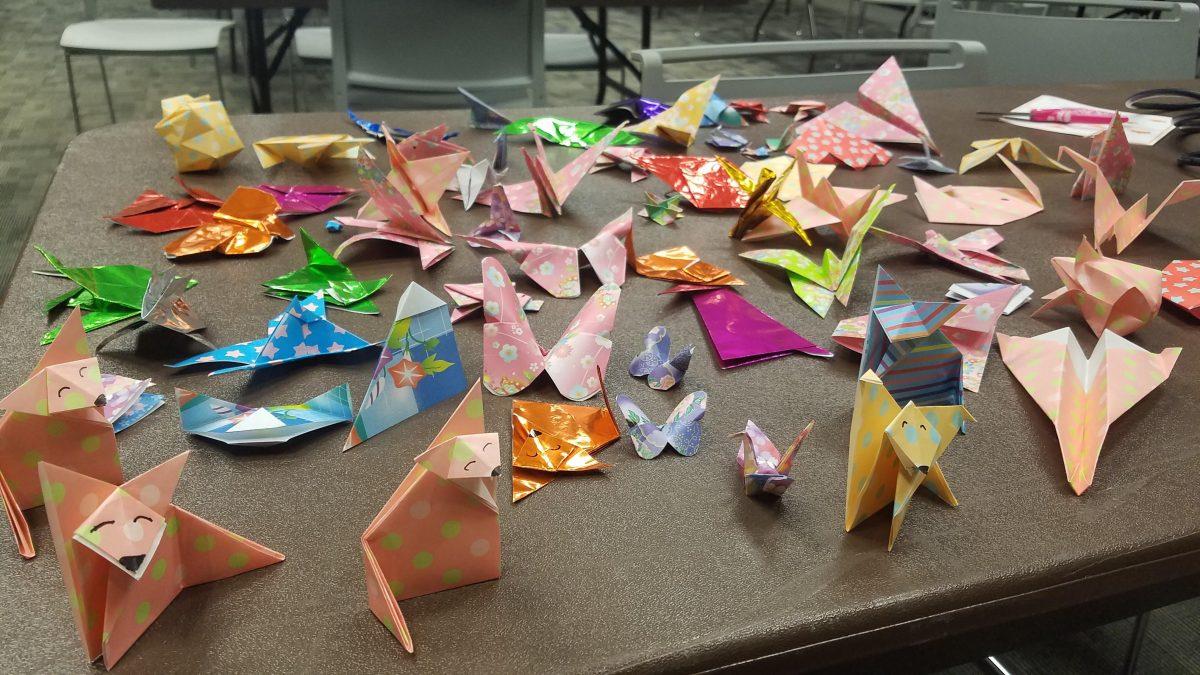A student-run campus organization has decided to take initiative to introduce art education into science-focused degree programs.
Symbiosis is a new organization focusing on combining the arts and sciences. Students often maintain a narrow focus on academic goals based on their school of study and don’t venture out of their comfort zone, said Katherine Mayfield, a neuroscience junior and public relations chair. Because of this schism, Symbiosis emphasizes the ways in which two separate disciplines interrelate, both within and independent of academia by giving students an opportunity to engage in artistic projects and enrichment when their degree plans don’t accommodate art.
“We want to overcome the gap between the arts and the sciences, both in our UTD community and also outreach in the Dallas area and wider community, to talk about how art can be beneficial in your everyday life but also in the sciences, the medical field and beyond, and how we can bring it to people in our community,” Mayfield said.
Members participate in crafting events, fundraisers and lecture series given by associated professors. Last semester, they crafted cards and provided art supplies for kids in hospitals, applied for a grant to raise money to create kits for Dallas Independent School District elementary schools and fundraised for Hurricane Harvey relief efforts. This semester, however, the officers are featuring more dialogues between professors and students in order to educate the members on the concepts they are promoting through service.
“It comes from the natural tendency of people to become invested in their path and the track that they’re on,” Mayfield said. “A lot of times, there’s a push to get on your track and finish and stay focused on that, but I think it’s important, as far as becoming a well-rounded person … to explore the arts or whatever is not in your field.”
Scott Segura, a biology senior, joined the organization last semester and participated in the outreach projects. He never had a chance to enroll in any artistic enrichment courses at the university, and he said the organization is a way to experience college outside of one’s career path and learn familiar concepts from other perspectives.
“Everyone likes to think that art and science are two different things,” he said. “The whole idea of being a right hemisphere or left hemisphere is wrong from a science perspective, both sides are doing the same thing. So it’s a good matchup, art takes a lot from science, science takes a lot from art and both take a lot from nature.”
The first speaker in the talk series is professor of aesthetic studies Charissa Terranova. Her work incorporates the 21st century concept of bio art, involving artists working in labs to look for different patterns than what scientists look for in cells. Terranova said she believes this effort is a positive step in the direction of providing UTD students with a holistic education they can use to become competitive in the workforce.
“(I envision) that it lasts in perpetuity and … might create something like a polymathy curriculum,” Terranova said. “Polymathy is not just a top-down, divine inspiration, where you’re genetically touched and special … you could actually have students from UTD working from their freshman year up to their senior year learning how to be polymaths, and I see Symbiosis as part of something like that.”
Arts and humanities senior lecturer Dianne Goode is the faculty sponsor for the association, and she said she has confidence in the students who formed the organization, as well as the university’s plan to embrace the arts as legitimate to every degree program.
“(Symbiosis) is different because it is a bridge,” Goode said. “They are pioneering in a way of a national movement at various levels of education to inject more arts into the sciences. We, in the arts and humanities, are a very interdisciplinary department, and that made us different from other universities.”
With her background in the arts, Goode said she understands the importance of art education in students, which is something Symbiosis plans to extend to DISD, with approval of the Victor Worsfold Grant, in order to promote inclusion of the arts starting from a younger age.
“Pre-med students are the officers, they all love the arts, and they feel that the degree program in science, where they are, doesn’t give enough opportunity, understandably so,” Goode said. “They are on a very serious track, but this is a group of students feeling that they want to bring more awareness to other UTD — mainly science — majors about the arts.”







